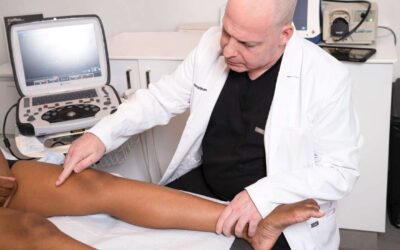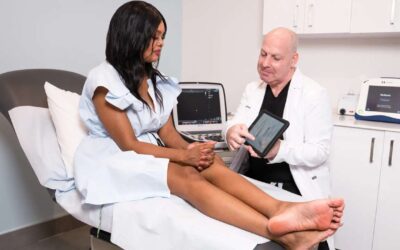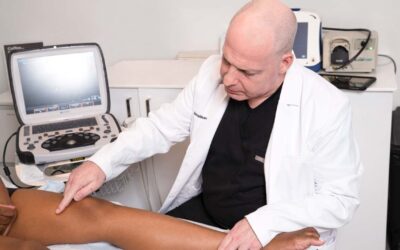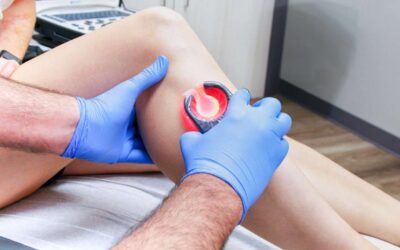What Causes Spider Veins? Do You Have These Risk Factors for Spider Veins?
What causes spider veins?
Have you ever wondered why some people have spider veins? Spider veins are small, twisted blood vessels seen just beneath the skin’s surface. They are usually red, blue, or purple and are most commonly found on the legs and feet. Most patients describe spider veins as a dense mass of twisted blood vessels that look like spider webs or the branches of trees. They are usually harmless, but they can indicate an underlying medical condition known as chronic venous insufficiency.
Chronic venous insufficiency is usually the root cause of spider veins. Venous insufficiency is a medical condition where your vein valves stop functioning correctly. In healthy veins, the valves act as one-way doors that allow blood to flow toward the heart against the force of gravity. When your vein valves malfunction or collapse, blood flows backward due to gravity and accumulates in the leg veins, eventually leading to dilated veins and spider veins. Venous insufficiency can also lead to varicose veins, leg heaviness, restless legs, and leg ulcers.
Chronic venous insufficiency is the possible root cause of spider veins. But some people are more likely to develop spider veins than others — why’s that? Below, we describe the possible risk factors for spider veins, such as genetics, gender, pregnancy, and occupation.
What are the risk factors for spider veins?
Spider veins are not just a cosmetic concern. While they may not be painful, they can indicate an underlying medical condition. If you have spider veins, you may be at risk for more serious health problems, including blood clots and varicose veins. But how can you tell if you have a high risk of spider veins? Below, we describe the most prominent risk factors for spider veins.
- Genetics: If you have a family history of spider veins, you may be more likely to develop them yourself. This is because genes can play a role in the eventual malfunctioning of vein valves, which can lead to spider veins. If your parents or grandparents had spider veins, you have a high risk of vein problems.
- Age: As we age, the valves in our veins become less effective. These valves ensure that blood flows in one direction, from the superficial to the deep veins. When the valves become less effective, blood flow is reversed and leaks back into the superficial veins. This pooling of blood can cause the veins to become enlarged and twisted, which leads to the formation of spider veins.
- Gender: Women are more likely than men to develop spider veins. Women have more estrogen than men, and estrogen can weaken the walls of veins, leading to a higher risk of vein disease. During pregnancy, the extra weight from the baby can put extra pressure on the veins in the legs, leading to spider veins.
- Pregnancy: During pregnancy, the body produces more blood and circulates it at a higher volume than usual. This increased blood flow can cause the veins to dilate and become more visible. Additionally, the extra weight that comes with pregnancy can put extra pressure on the veins and cause them to become even more dilated. Finally, hormones produced during pregnancy can also contribute to the development of spider veins.
- Obesity: Obesity puts additional pressure on the veins in the legs, which can damage the valves and cause them to leak. Obesity also causes inflammation throughout the body, including the veins. This inflammation makes it more difficult for the veins to transport blood back to the heart.
- Sedentary Lifestyle: If you have a desk job or spend a lot of time sitting, you’re more likely to develop spider veins. That’s because when you don’t move around much, your blood doesn’t circulate as well. This can cause the blood to pool in your veins, and over time, the veins can become larger and more visible.
- Occupation: If your job requires you to stand for long periods of time, you’re at a higher risk for spider veins. Prolonged sitting or standing can cause increased pressure in the veins of your lower body. This pressure can damage the valves in your veins and cause them to become weak and leaky, leading to spider veins. That’s why spider veins are particularly common amongst teachers, drivers, pilots, nurses, and people with desk jobs.
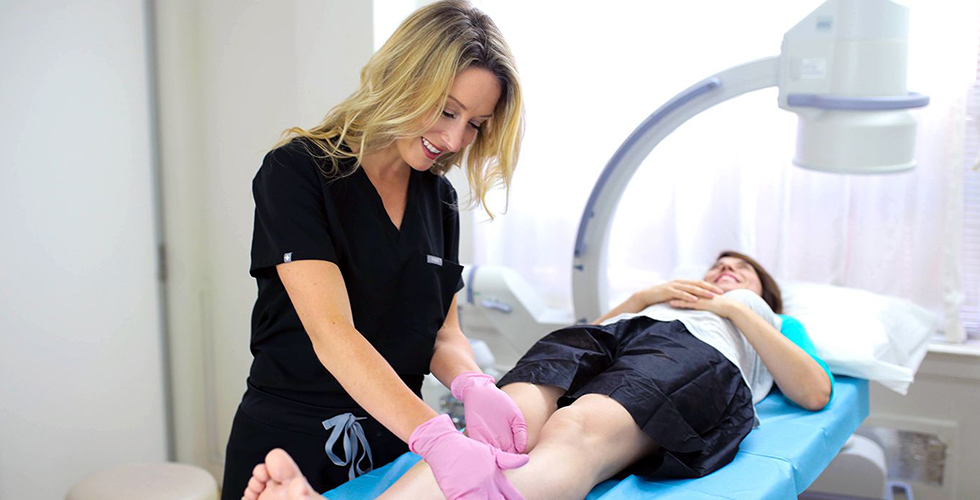

BOOK AN APPOINTMENT
Experiencing symptoms of vein disease? Book an appointment with one of the our Vein Specialists in New York.
How can I reduce the risk of spider veins?
- Wear Compression Stockings: This will minimize the pooling of blood in the veins and improve blood circulation, thus minimizing the risk of spider veins.
- Exercise Regularly: If you engage in cardiovascular exercises, such as running and swimming, your calf muscles will push the accumulated blood to the heart and improve blood circulation, thus minimizing the risk of spider veins and vein disease.
- Elevate Your Legs. When you elevate your legs while sitting down, gravity forces some of the accumulated blood to flow toward your heart, taking pressure off your leg veins.
- Avoid Sitting or Standing for Long Periods: If you must sit or stand for long periods, take breaks often to move around and stretch your legs.
- Maintain a Healthy Weight: Extra weight puts pressure on the veins, leading to a higher risk of collapsed vein valves and spider veins.
New York Vein Treatment is a group of state-of-the-art medical centers for vein treatment in New York. If you have the risk factors for spider veins, we encourage you to visit our board-certified vein doctors. We will evaluate your veins, discuss your symptoms, and determine the likelihood that you have underlying vein disease. We can also recommend tips to minimize the risk of spider veins and improve your vascular health. You can find our medical centers for vein treatment in Midtown Manhattan and the Financial District. Please schedule an appointment at your nearest medical center for vein treatment in New York.
MEET OUR NEW YORK
VEIN SPECIALISTS
Dr.MICHAEL NGUYEN
Veins Specialist NYC
He leads the team of vein doctors offering the highest level of care at our Spider and Varicose Vein Treatment Center NYC.
HARVARD MEDICAL SCHOOL
Dr. JUAN D. MONTOYA
Veins Specialists NYC
Highly sought after for his expertise and excellent outcomes in Vein Treatments in Manhattan.
YALE MEDICAL SCHOOL
Dr. SAREH RAJAEE
Veins Specialists NYC
She has extensive experience with vein performing procedures based on New York City.
HARVARD MEDICAL SCHOOL
Learn more about our clinics, doctors and procedures!







Contact us
Call us
Speak instantly with one of our team members; they will answer any questions you may have regarding insurance coverage, booking an appointment and our vein treatment locations. (332) 263-9984
Book online
Visit our Book Appointment page and instantly request an appointment at the New York vein center near you. We offer Free Insurance Verification before your appointment.
Get directions
Learn how to easily get to the New York vein center.
FEATURED POSTS BY VEIN DOCTORS
Best Treatment for Spider Veins in Upper East Side, NY
Best Treatment for Spider Veins in Upper East Side, NYYou may have noticed clusters of thin, reddish-purple veins spreading across your legs, ankles, or face. At first, they might have seemed like a minor cosmetic issue—a few visible veins that didn’t cause much...
Treat Venous Reflux at Upper East Side’s New Vein Clinic
Treat Venous Reflux at Upper East Side's New Vein ClinicYou may have noticed heaviness, aching, or swelling in your legs, especially after standing for long periods. Perhaps your legs feel restless at night, or you see bulging veins beneath the skin. These could be...
Sclerotherapy for Varicose Veins in Upper East, New York
Sclerotherapy for Varicose Veins in Upper East, New YorkHave you ever noticed clusters of thin, web-like veins spreading across your legs or experienced persistent aching, heaviness, or swelling? These symptoms might seem minor initially, but they could indicate...
Best Treatment Options for Spider Veins in Bronx, New York
Best Treatment Options for Spider Veins in Bronx, New YorkYou’re getting ready for an outing, but you feel self-conscious about the thin, web-like veins visible on your legs. You wonder if they’re purely cosmetic or indicative of a deeper issue. Perhaps you’ve...




